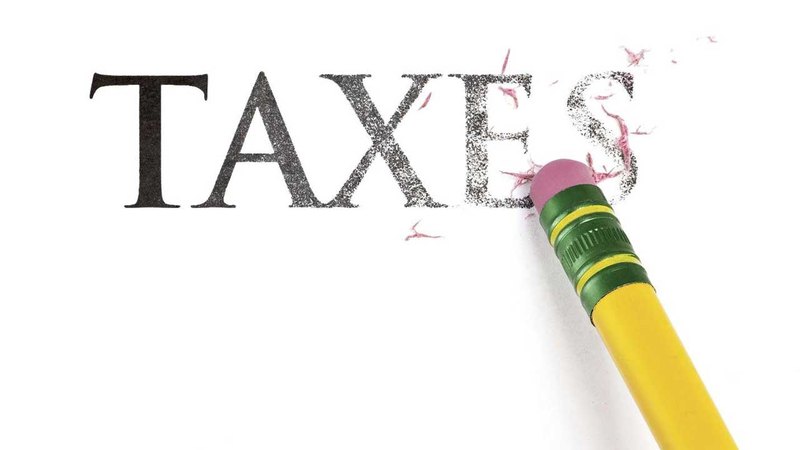For most people, retirement is something to look forward to at the end of their careers. You might quickly be approaching that stage in your life and finding yourself actively doing some retirement planning.
One of the main questions that plagues most people engaged in financial planning is, “When do I take my Social Security benefits?” Despite the system changes in 2015, people still struggle with this question, especially when taxes come into the picture during retirement income planning.
What exactly are the taxes that you will encounter in your personal retirement planning, and what are some of the best ways to save on taxes in your retirement? Let us explore these questions in more detail.

Taxes In Retirement
Your retirement planning advisor may have told you that the amount of taxable Social Security benefits will depend upon other income sources such as IRA/401k distributions or pension incomes.
How To Calculate Taxes In Retirement?
The IRA/401k distributions and pension incomes are taxed pretty much the same way as ordinary income. However, retirement financial planning will require you to calculate the amount of Social Security taxable during your retirement. Fortunately, there exists a formula known as Provisional Income which helps you calculate this amount. The formula is:
Provisional Income = Adjusted Gross Income before Social Security + ½ of your Social Security benefits.
Once you have arrived at your provisional income using this formula, you will need to check how much your Social Security is taxable by running the provisional income amount through an entertaining 18 step IRS worksheet.
Benefits Of Delaying Social Security
People between the ages of 65 and 70 typically receive an average household income under $80,000. Retirement planning specialists will tell you that there are significant advantages to delaying Social Security to reach an income level of $80,000. Take a look at the chart below, and you will understand better.
| Age | Joint SS | Taxable SS | % SS Taxable | IRA Dist. | Fed Taxes | Cash Flow |
| 62 | 43,200 | 27,400 | 63% | 40,554 | 3,754 | 80,000 |
| 63 | 46,080 | 19,671 | 43% | 37,044 | 3,124 | 80,000 |
| 64 | 49,152 | 17,790 | 36% | 33,294 | 2,446 | 80,000 |
| 65 | 52,429 | 15,829 | 30% | 29,349 | 1,778 | 80,000 |
| 66 | 55,924 | 12,183 | 22% | 25,059 | 983 | 80,000 |
| 67 | 60,398 | 11,291 | 19% | 19,990 | 388 | 80,000 |
| 68 | 65,230 | 8,877 | 14% | 14,770 | - | 80,000 |
| 69 | 70,448 | 6,660 | 9% | 9,552 | - | 80,000 |
| 70 | 76,084 | 4,979 | 7% | 3,916 | - | 80,000 |
| Increase in Social Security - 62 to 70 | 32,884 |
| Decrease in Taxable Social Security | 22,421 |
| Decrease in IRA/401k Distributions | 36,638 |
| Decrease in Federal Taxes | 3,754 |
If you look carefully at this table, you will notice that not only does the Social Security amount that you receive increase greatly the more you delay, but the taxable amount also drastically reduces further down the line. This is excellent news for retirement planning for small business owners and individual contractors who have not built up savings during their working years. This is because the more you delay your Social Security, the lesser the income you will have to receive from retirement plan distributions to reach the same net income every year.
What About Taxes For Higher Incomes?
When soliciting retirement planning advice, you might ask the question, “Does this analysis also hold up for higher-income households?”
The truth is that a low-income household will typically end up with a higher amount of tax savings than a high-income household. But this does not mean that there are no tax benefits for high-income households in delaying Social Security. This is because at least 15% of your Social Security amount is tax-free regardless of your income. Take a look at this chart outlining the tax savings for a household with an annual income of $120,000.
| Age | Joint SS | Taxable SS | % SS Taxable | IRA Dist. | Fed Taxes | Cash Flow |
| 62 | 43,200 | 36,720 | 85% | 90,298 | 13,498 | 120,000 |
| 63 | 46,080 | 39,168 | 85% | 87,297 | 13,377 | 120,000 |
| 64 | 49,152 | 41,779 | 85% | 84,093 | 13,245 | 120,000 |
| 65 | 52,429 | 44,565 | 85% | 80,673 | 13,102 | 120,000 |
| 66 | 55,924 | 47,535 | 85% | 77,035 | 12,959 | 120,000 |
| 67 | 60,398 | 51,338 | 85% | 72,374 | 12,772 | 120,000 |
| 68 | 65,230 | 52,957 | 81% | 66,629 | 11,859 | 120,000 |
| 69 | 70,448 | 48,461 | 69% | 58,730 | 9,178 | 120,000 |
| 70 | 76,084 | 45,015 | 59% | 51,858 | 7,942 | 120,000 |
| Increase in Social Security - 62 to 70 | 32,884 |
| Decrease in Taxable Social Security | 8,295 |
| Decrease in IRA/401k Distributions | 38,440 |
| Decrease in Federal Taxes | 5,556 |
Keep in mind, a $1 increase in Social Security does not necessarily mean a $1 decrease in distributions. As you can see, the tax savings you make can also help reduce your distributions by a significant amount.
Determining the optimal age to file for Social Security benefits depends upon a huge range of factors, including taxes, health care needs, long-term care, survivorship needs, and cash flows. It is best to reach out to a retirement management company to get the most out of your retirement savings and benefits.

At Colorado Wealth Group, we ease the process of financial planning by catering exclusively to your needs. If you need help navigating your retirement journey, reach out to us at (720) 729-2500.

